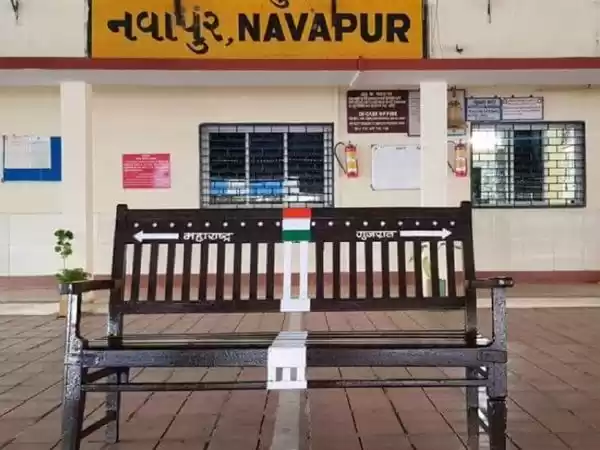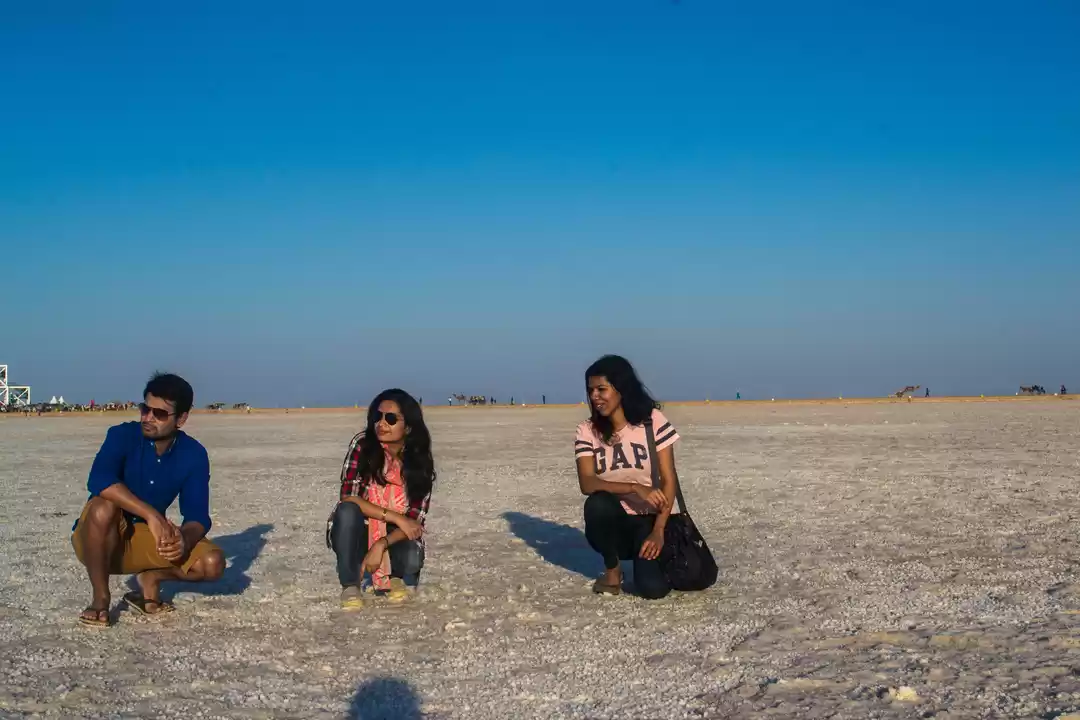
This is the story of a pale white desert whose salty reaches stretch far back into the horizon, of a land where borders become porous, of a village where warmth and cheer thrive in abundance, of a people whose ways date back to a time long gone. All of this and more, in the tiny village of Hodka that lies in the Rann of Kutch near the Indo-Pakistan border. Think of every story you’ve ever read and loved and you’ll find a small piece of it somewhere here.
Let me take you back to a winter not long ago. It was a long drive - the kind that leads you through a dense jungle of concrete and cars and then suddenly breaks into an expanse of windmills before leading you into marshlands and grasslands that are so typical of Kutch.


We drove to Kutch from Ahmedabad, a journey that brought the realisation that there are few travel destinations that offer such a dramatic change in landscape all within a distance of a few hundred kilometres. Leaving behind the commercial humdrum of the city, we began to get closer to the desert, our path guided by wind turbines standing tall against the orange evening sky. Windmills are a characteristic part of the Kutch landscape, with the steady wind conditions through the day and night making it a perfect setting to harness energy.
As we moved beyond Bhuj towards the Banni grasslands, the expansive plains of Kutch seemed to lead into the horizon. The Banni grasslands have their own special place in defining the history and culture of this part of Gujarat. The land here is believed to be made of the sediments of the Indus river from centuries ago. Banni villages are occupied by pastoral nomadic communities rooted in tribal culture. Indeed, as you absorb the vibe of Kutch, you will realise that the years have moved very slowly here. You will mostly find the people engaged in pastoral work and artistry. The facial features, the language, the clothes and the jewellery of the locals set them apart with different tribes tracing their roots to Rajasthan, Pakistan and Iran.


Hodka is one such Banni village bordering the marshes of the Rann of Kutch. Entering this tiny village came as a wonderful surprise, with the most vibrant mud huts decorated with fabrics, paints and mirrors. Scattered across the village were girls and women of different ages clothed in traditional Kutchi gear, going about their daily work of stringing together beads, sewing, knitting, dyeing and more, all the while maintaining a style that is distinctively their own.


Rarely does one find such a purely artist-driven space where one can be at such close quarters with art and craft of tribal artisans. As soon as I alighted, a little girl drew me into a hut where her mother and grandmother were crafting jewellery. She opened a plastic box to reveal a gorgeous collection of trinkets, all made right inside the tiny mud hut where we sat. We communicated mostly in smiles and gestures, and the little entrepreneur ensured that I did not leave without buying a pair of traditional silver anklets!
We explored the village and were advised to stay at the Shaam-e-sarhad resort that falls in the outskirts of the village. Shaam-e-sarhad stands out as an oasis of vibrancy in the midst of the deserts and marshes of Kutch. The same circular mud houses that populate the heart of Hodka village are built within the property. Traditionally called ‘bhunga’ huts, their mud walls keep the interiors cool even at the peak of summer. The exterior is decorated with paintings and traditional mirror work. Inside, you will find extremely neat and comfortable sleeping arrangements and attached bathrooms with running water and your choice of hot and cold. Between the bhungas and the tents at the resort, it doesn't take long for one to start feeling like you’ve become a part of a travelling caravan!


Our guide Mustaq, a young man from Hodka who spoke Kutchi, Hindi and fairly good English explained to us the most striking feature of the Shaam-e-sarhad resort - its status as a purely community-driven initiative. The property is run by the rural inhabitants of the region and provides direct employment to them. It comes as a venture that looks to encourage the involvement of local communities in Kutch’s tourism ventures in order to boost responsible tourism that creates awareness about local culture and practices. While it doesn't qualify as a homestay, the resort offers the opportunity to be hosted by the charming village folk of Kutch.
The food served at Shaam-e-sarhad is phenomenal. The lunch thaali has fresh bajra roti with ghee and shakkar served with steaming hot vegetables and dal. The spices used are freshly ground and add the right flavours to what could possibly be one of the best meals of one’s life!
In its role as a promoter of local handicrafts, the staff at the property willingly guides you to the homes of artisans, where you can watch handicrafts being painstakingly created from scratch. One can make purchases directly from the artisans, which helps to foster a much better understanding of the technique and cultural relevance of Kutchi handicrafts.
There’s plenty to do during your stay at Shaam-e-sarhad - an excursion to the Great Rann of Kutch, visits to other Kutchi villages, exploring the traditional water catchment structures that cater to the needs of the desert and its people. The evenings are best spent listening to the local musicians who stroll into the resort when the sun goes down. Dinner is served while gazing at the stars. With the rising strains of an old, forgotten song you will forget that you are sitting on land that is only a few kilometres short of the Indo-Pak border. Suddenly, it isn't frontiers that matter. What matters is a shared history as old as time, the sparkle of shooting stars that travel through the sky with no boundaries and a song that makes its way softly across the great white desert. Here, you will experience a real ‘shaam-e-sarhad’ - an evening by the border.

To know about Hodka and Shaam-e-sarhad in greater details, click here.
How to reach
Nearest airport - Bhuj Airport
Nearest Railway station - Bhuj Railway Station
































